[First posted after "The Family of Blood".]
This week I'd like to ignore the complex issues of mortality and social responsibility raised by "The Family of Blood", and talk about monsters. Old monsters. Dirty old stinking monsters.
Once, many years ago - or at least, more than ten, which qualifies as "many" because I'm attempting to sound wise while still retaining a facade of youthful enthusiasm - I read a Doctor Who book in which the villain was a malignant bodiless intelligence who could control the minds of human beings. On the whole, this was no more interesting than any of the other malignant bodiless intelligences we've seen over the years, yet I still found myself wondering about the similarities between this spurious new aether-monster and the Great Intelligence from "The Abominable Snowmen" (1967, although you probably knew that). And, weirdly assuming that this was "continuity" rather than a desperate lack of imagination, I heard myself think: 'Wow, the Great Intelligence! This might be its first appearance in the series for nearly thirty years!'
Looking back on it, this was clearly a moment of epiphany. The moment when I was hit by the sudden, shocking realisation that… if it did turn out to be the Great Intelligence, then it wouldn't actually make the story any more interesting.
This revelation was less obvious than it might now seem. Bear in mind that I entered fandom (of a kind) via Doctor Who Weekly, and learned most of what I knew about the history of the series from chunky "anniversary" volumes like Peter Haining's Doctor Who: A Celebration, now clogging up the shelves of Oxfam shops nationwide. Most of these books were hugely inaccurate, but that's beside the point. In the years before cheap video, the fans were obsessed with the series' past - a past we never thought we'd actually see, not even the bits that hadn't been taped over by the BBC - leading to intense debates about whether the Daleks or the Master were the Doctor's greatest enemy, depending on whether you counted their appearances in terms of stories or individual episodes. I was part of the generation which thought about Doctor Who in much the same way that American sports fans think about baseball, with scorecards and statistics for every occasion: part of me still "knows" that there are nine-and-a-half Cybermen adventures, even though this information is clearly out-of-date as well as completely useless. In the 1980s, the return of any "old" monster was greeted with a great whooping and cheering, because (in effect) it improved that monster's batting average. Even the producer came to think this way after a while, which is why he kept bringing back the Master even when everyone was sick of the bastard. So, a brand-new story featuring an arch-enemy not seen since 1967…? Even if it only happened in print rather than on TV, it still scored points. As if attaching the name of something from the before-I-was-born era of Doctor Who was in some way an excuse for the wretched banality of it all.
I've been thinking about this a lot, in the wake of "Human Nature". For all its highs, there are parts of the episode which just seem slow, but… not in the ways we might expect. The slow bits aren't the "talky" bits: in fact, the three-and-a-half-sided love-triangle between the Doctor, the New Girl, the Semi-Doctor and This Year's Love Interest are a pleasant reminder of what things were like in the days of "proper" telly, when characters were allowed to have quiet conversations and not everything had to be rapid-cut or filmed with a shaky hand-camera. No, the slow bits are the "monstery" bits. Aliens disguised as human beings are never interesting, and in the case of "Human Nature", they spend the whole episode establishing themselves as generic body-snatchers. In a series that treats spaceships and bodily possessions as an everyday occurrence, it really shouldn't take four minutes of screen-time for Baines to find a UFO and then demonstrate that he's been taken over. We've seen all of this before, many, many times, so it's not as if we need to be told every little detail. Nor do we need all those scenes of possessed people acting out-of-character and plotting amongst themselves, when we know they're going to say exactly the same things that alien plotters always say in these situations. Because while the Family of Blood is indulging in all this routine villainy, the regulars are doing something much more involving, and even the thirteen-year-old boy on the games field is going all Twelve Monkeys on us.
But: a-hah, I thought. A-hah. The Doctor describes these aliens as hunters. They track their prey by smell. They have a strong sense of family. They insert themselves into human bodies, they've got a thing for strange gases, and they clearly prefer fat victims. Even Rebekah Staton looks like a younger, cuter Annette Badland. Is the message not clear, I asked myself? After all, the villains in the original novel of Human Nature were far less generic, and why would any writer make his own creations less interesting unless he were planning to turn them into some other form of monster? In short: are these not the Slitheen, or at least some other Raxicoricofallapatorian family? Is this not likely to be the big twist in the second half of the story? True, they seem more reliant on other people's flesh than the Slitheen we used to know, and their mother is so degenerate that she's become a vapour who lives inside a novelty paperweight (unless, of course, she's a Slitheen guff who's somehow acquired the power of speech). But they have so much else in common, even more so than the Bane from the Sarah-Jane pilot, who might be considered Slitheen wannabes anyway. Then there's the curious fact that although we don't see any Slitheen when Smith flips through his Journal of Impossible Things, there's a later scene in which Nurse Redfern specifically points to a portrait of one, just so we get a close-up of its smug Raxicoricofallapatorian face. As if we're being gently prodded to remember something. Oh, yes: ah-hah is very much the word.
I thought.
The Slitheen turned out to be like all other gas-men, though: I waited for them all day, and they never turned up. Now I feel a sense of disappointment that's wholly of my own making. But the question remains… even if the School Bully and the Scary Little Girl had unzipped their heads and revealed themselves to have big green baby-faces, would that have made any difference? Because whatever their true nature had turned out to be (and it's got to be said, their status as vaguely-defined near-immortals seems to have served the plot rather well in the end), it wouldn't have changed the fact that the first half of the story is still a bit slow when the bad guys are on the screen, or that the Family is still made up of generic body-snatchers. The Slitheen in "Aliens of London" work because they avoid the usual gamut of "possession" clichés: putting big flabby monsters inside politicians isn't an attempt to generate hokey sci-fi suspense, it's a way of turning them into Hogarth-style grotesques. They don't waste time creeping about the place with mad staring eyes, the way the Family of Blood does. Whatever you call the villains in "Human Nature", hokey sci-fi suspense is their stock-in trade, and it's the one whacking great flaw in the story. Although admittedly, they automatically become more interesting once they're dumped in collapsing galaxies or trapped in mirrors.
I've never believed that a single line of dialogue, or even a single name, is enough to change the basis of an entire script. Generations of fanboys have (for example) tried to claim that "Image of the Fendahl" raises the stakes of the whole series, because it pits the Doctor against an enemy which "is" death, and yet… we only know it's supposed to "be" death because the Doctor says so, once, in a single line of a single scene. Watch the rest of the story, and the Fendahl just looks like any other poxy life-sucking monster we've seen over the years. And clearly, a generic disembodied intelligence doesn't become any more worthwhile if it's a generic disembodied intelligence from 1967, although it took me a distressingly long time to break the '80s fan-conditioning and notice this. Likewise, only Mark Braxton would be a big enough arse to believe that if the Doctor refers to some giant CGI crabs as "Macra" - rather than as "Crabulons", or "Clawrentulas", or "Sniptrodines", or any other spurious sci-fi name - then it changes the nature of an episode to such a degree that it's even worthy of a mention in the Radio Times. Yet somehow, I find myself disappointed that a bunch of family-obsessed hunting-monsters in 2007 don't have the same name as a bunch of near-identical family-obsessed hunting-monsters from 2005. Even by my standards, this is irrational.
Mind you… given that the Family wants to be the Doctor, it's tempting to imagine that each member of the group is a distorted aspect of the Doctor himself, especially since this is the only twenty-first century story in which we see the (hurriedly-sketched) faces of his previous selves. We might suppose that the Fat Bloke is Colin Baker, or that the One Who Looks Much Too Young is Peter Davison, and they've even got an army of Jon Pertwees circa Worzel Gummidge.
skip to main |
skip to sidebar
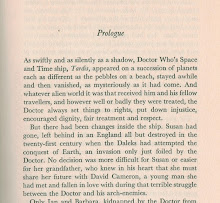
Or, "Doctor Who and the Nightmare of Eton". The typo is now well-known, but almost as disturbing is the next paragraph's description of Ian and Barbara as the Doctor's "close friends", right after it admits that he kidnapped them. Because all great companions start out as victims of Stockholm Syndrome.
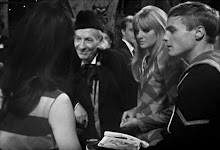
"He looks like that disc jockey!" "Mm? Ehh? Are you calling me a paedo? Hm!"
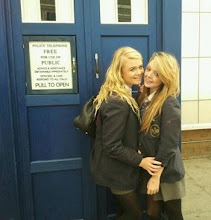
I'm now so thoroughy depressed, appalled, and irritated by the tabloid media's war on (a) the BBC and (b) facts, I can't even be bothered doing the joke about the deleted scene from "A Fix with Sontarans" that was supposed to accompany this photo. (Yeah, it's just two schoolgirls giggling outside a police box. Whatever punchline you like, really.) But I will mention that in 1977, the same year Mary Whitehouse's assault on Doctor Who reached its most vitriolic point, she presented Jimmy Savile with a special award for his "wholesome family entertainment". Then, as now, morality campaigners were very bad at spotting actual immorality. Even when it was standing right next to them in a DayGlo vest.

Foamasi puts pasta in microwave without piercing film lid: full story, page 3...

...man who asked to be crushed between the chests of two mummies explains, "I was expecting MILFs": full story, page 3...

...creating an intelligence that turns men into drooling weak-willed zombies, Post Office Tower calls it "Will Operated Mind Analogue" before receiving complaints: full story, page 3...

...evil genius finally admits why he's so insecure: full story, page 3...

...while Sontaran explains why he's not insecure at all: full story, page 3...

...new fossil study suggests that pterodactyls reached their evolutionary peak in 1976, and "have been getting gradually more shit ever since": full story, page 3...
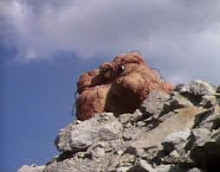
God of the Ogrons, seen from below.

Peter Griffin, seen from below.
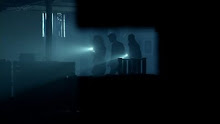


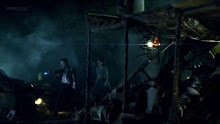



...production team that promised "darkest series yet" admits to being terribly over-literal: full story, page 3...

...crude, half-formed, rubbery-faced parody of the Doctor meets his Rebel Flesh duplicate: full story, page 3...

...environmentalists claim Doctor Who "using up 80% of the world's blue light": full story, page 3...

...long-term Doctor Who viewer, told to "go away and be a fan of something else", responds with elementary "go away and stop ruining our programme" defence: full story, page 3...
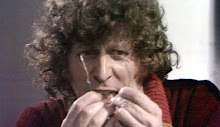
"To exterminate a life-form... to know that just by touching two wires together, I have the power of life and death over an entire species... do I have that right?"

"Yes! Duh: how are you going to look cool when you're agonizing about stuff? In fact, not only should you broadcast an order to commit genocide against creepy-looking aliens, you should turn your sonic screwdriver into a gun so that you can help your love-interest slaughter as many of them as possible on the way out. Then, once she's good and hot from all the killing, cop off with her while dramatic music plays in the background and the viewers cheer like the shit-eating battery animals we all know they are. Haven't you seen any action movies? Get with the programme, granddad!"

Next time: how to end "The Silurians" after episode four, by gouging their eyes out with razors and claiming it's a revolution.
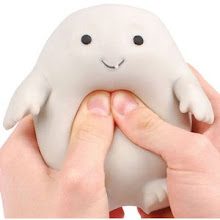
My Adipose stress-toy burst after ten days of squeezing, so there's something very wrong with at least one of us. However, the packaging features one of the best warnings in the history of consumerism: "To avoid strangulation risk, do not stretch the Adipose around anyone's neck." The Autons could only dream of this brave new world.
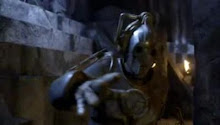
"Gold prices are at an all-time high. Do you have gold jewellery you no longer need? We'll give you cash for it, no questions asked. At LeaveEarthDefenceless.com, we just... we just want to take it away from you. Please."

"I cannot give you cheap car insurance! CompareTheMyrka.com, CompareTheMarket.com. Simples! Raah."

...at www.beasthouse.co.uk
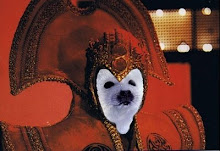

"Zirg didn't mind advertising the other Daleks, but felt that advertising Dr Who was somewhat beneath his dignity." Actually, although Sandwich-Board-Dalek is the most immediately noticeable thing about this cover, a more striking point is that the video was released by HBO... now known for The Wire, True Blood, and other things which don't seem on an obvious creative trajectory from Roy Castle falling over on a lever. A third point is that the tagline specifies an adventure in space, but not in time. So we can say with some certainty that the fall of the Dalek city took place in 1965, and not 1963 as Lance Parkin claimed.

MW1. The HandyHand 3000. This portable, cheekily-shaped utility can hold up to 120 gigaspacks of regeneration energy, even the kind that makes absolutely no sense. Extra features include the ability to undermine what “regeneration” actually means, and the option to grow into a full-scale biological copy of the user for no discernable reason. No mechanical parts: every HandyHand 3000 is lovingly sliced from the wrist of a newly-regenerated Time Lord, who must be wondering why he never thought of doubling his lifespan by doing this sort of thing before. Guaranteed to be described as “iconic” in ten years’ time instead of “shit”. Cat. no. 202413.

MW2. Archangel Satellite System. The ideal gift for the evil mastermind on the go, the Archangel Satellite System allows today’s megalomaniac to brainwash an entire country in less than eighteen months, and become Prime Minister without the fuss of using his hypnotic powers or doing anything really devious. Can also be used to magically heal a shrunken, wizened time-traveller, and thus reaffirm his belief in the greatness of humanity. (Warning: reaffirming your belief in the greatness of humanity may involve convincing millions of people across the world to slavishly pray to a spurious messiah-figure, without any of the bad guys’ informers finding out about it.) Cat. no. 191312.

MW3 . Wristband Teleporter. The perfect way to get characters exactly where they need to be, without any need for proper coordinates or logical storytelling. Comes equipped with the new WhateverFix system: if disabled by a sonic device, the wristband can be re-booted just by punching in two digits from a completely different teleportation device that’s been produced by a completely different technology. Capable of transporting three people halfway across the galaxy and billions of years back in time, unless used in the middle of a Dalek attack, in which case it’s capable of transporting one person from Cardiff to London while leaving everybody else behind to die. Cat. no. 190311.

MW 4. Sonic Screwdriver. Our best-selling item, the Mk IV Screwdriver can do virtually anything the modern-day cosmic adventurer might ask, from soldering to rhinoplasty. Can also be waved in the faces of onlookers while you shout “it isn’t a massive cop-out, it’s part of the mythology!”. If trapped on a planet at the end of time and surrounded by cannibals while the Master steals your TARDIS, then why not try using the screwdriver in conjunction with item MW3, and instantly destroying any hope of dramatic tension? Cat. no. 182301.

MW5. Interdimensional Hoover. Scientific research has proved that nothing can exist in the void between universes, and that neither time nor matter have any meaning there, which is why it’s full of background radiation. Take advantage of this bizarre quirk of physics with the Interdimensional Hoover, powerful enough to suck up even the toughest ground-in Daleks and deposit them in an eternal interstitular Hell. Comes with a patented filter attachment, to prevent the dimension-hopping TARDIS being sucked out of the universe at the same time, somehow. (Warning: users are advised to use the Hoover only during an incredibly sad and distracting goodbye, to stop anyone asking how it works.) Cat. no. 180212.

MW 6. Self-Destructive Human Stooge. Hand-reared to sacrifice him- or herself for the greater good in any crisis, even when it’s entirely out of character. A perennial favourite, the Stooge also comes in “annoying American teenager” and “diminutive Australian”. Cat. no. 200410.

MW 7. Openable TARDIS Console. Still our most talked-about item, the Console allows even the most inexperienced user to access all the power of space and time (tow-truck not included), and is fitted with built-in “faith manipulators” to convert the emotional excitement of an end-of-season two-parter into pure Dalek-slaying energy while bypassing all logic and reason. Can only be used once without ripping the universe apart. (Has already been used twice.) Cat. no. 169113.

MW8. Thing That Can Vanish a Two-Hundred-Foot-Tall Cyberman. Christ knows how this one's supposed to work. Cat. no. 203500.

...world's philosophers admit to feeling "a bit silly" after last scene of "Prisoner of the Judoon" explains meaning of life: full story, page 3...

...recession leaves Time Lords "too poor to afford railings": full story, page 3...

...the thing that the man who's the foundation of this society would never do is "probably" the same thing that Meatloaf wouldn't do for love, say scientists: full story, page 3...

..."we were even more stoned when we thought this one up than we were during 'The Wheel in Space'," admits Cyber-Leader: full story, page 3...

...BBC launches "subconscious product-placement" inquiry, after viewers find themselves thinking about Tennant's Extra without knowing why: full story, page 3...

...following Australian court's ruling that obscene drawings of characters from The Simpsons qualify as "child pornography", 12,000 fanboys immediately arrested for writing slash-fic about sex with two-day-old girl: full story, page 3...

After Doctor Who, Sherlock, and Jekyll, BBC announces quest to find other UK legends that Steven Moffat can completely miss the point of and then ruin for everybody in the future: full story, page 3...

"Leeeeet's hope they never bring her baaack though, 'cos thaaaaat would be a bit too shite..."

"Mar-tha... I can't say her real name, it's Free-ma, then something with an 'A'..."

"Crap! The comedy sidekick's back... crap! The comedy sidekick's back..."
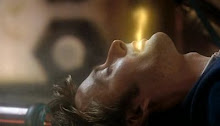
"De-e-e-us ex ma-chi-na..."
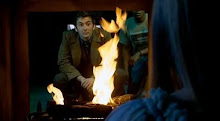
"Monsieur... what are you doing in my fireplace?"


"Look, I'm in the television!"


"Monsieur... what are you doing in my television?"
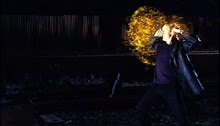
"Today... nobody dies!"


"Oh, you wonderful, impossible man."


"Today... nobody dies! Thanks to that wonderful, impossible man."

Contrived love interest.


"You don't know me, but I'm going to be important in your future."


"You don't know me, but I'm going to be a contrived love interest in your future."

Inevitable love-interest death.


Timey-wimey paradoxical non-explanation.


Inevitable love-interest death, averted by timey-wimey paradoxical non-explanation.

"Are you my mummy...? Are you my mummy...? Are you my mummy...?"


Real-world thing likely to make children pretend to be scared.


"Hey, I've been eaten by shadows...! Hey, I've been eaten by shadows...! Hey, I've been eaten by shadows...!"
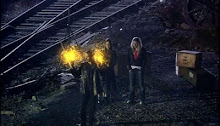
Unexpected super-powers.


Absurd fetishisation of the Doctor.


Imminent godhood.
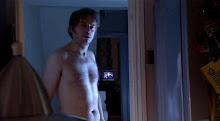
Sitcom characterisation.


Squee.


The Beast.
It's the end, except for various statements of little import
That Unfortunate First Page of "Doctor Who and the Crusaders"

Or, "Doctor Who and the Nightmare of Eton". The typo is now well-known, but almost as disturbing is the next paragraph's description of Ian and Barbara as the Doctor's "close friends", right after it admits that he kidnapped them. Because all great companions start out as victims of Stockholm Syndrome.
This Year's Big Story: Time-Traveller Demonstrates Knowledge of Future

"He looks like that disc jockey!" "Mm? Ehh? Are you calling me a paedo? Hm!"
You Know What...?

I'm now so thoroughy depressed, appalled, and irritated by the tabloid media's war on (a) the BBC and (b) facts, I can't even be bothered doing the joke about the deleted scene from "A Fix with Sontarans" that was supposed to accompany this photo. (Yeah, it's just two schoolgirls giggling outside a police box. Whatever punchline you like, really.) But I will mention that in 1977, the same year Mary Whitehouse's assault on Doctor Who reached its most vitriolic point, she presented Jimmy Savile with a special award for his "wholesome family entertainment". Then, as now, morality campaigners were very bad at spotting actual immorality. Even when it was standing right next to them in a DayGlo vest.
In Other News...

Foamasi puts pasta in microwave without piercing film lid: full story, page 3...

...man who asked to be crushed between the chests of two mummies explains, "I was expecting MILFs": full story, page 3...

...creating an intelligence that turns men into drooling weak-willed zombies, Post Office Tower calls it "Will Operated Mind Analogue" before receiving complaints: full story, page 3...

...evil genius finally admits why he's so insecure: full story, page 3...

...while Sontaran explains why he's not insecure at all: full story, page 3...

...new fossil study suggests that pterodactyls reached their evolutionary peak in 1976, and "have been getting gradually more shit ever since": full story, page 3...
Separated at Birth...

God of the Ogrons, seen from below.

Peter Griffin, seen from below.
In Last Year's News...







...production team that promised "darkest series yet" admits to being terribly over-literal: full story, page 3...

...crude, half-formed, rubbery-faced parody of the Doctor meets his Rebel Flesh duplicate: full story, page 3...

...environmentalists claim Doctor Who "using up 80% of the world's blue light": full story, page 3...

...long-term Doctor Who viewer, told to "go away and be a fan of something else", responds with elementary "go away and stop ruining our programme" defence: full story, page 3...
Morality Corner: Your Ethical Questions Answered

"To exterminate a life-form... to know that just by touching two wires together, I have the power of life and death over an entire species... do I have that right?"

"Yes! Duh: how are you going to look cool when you're agonizing about stuff? In fact, not only should you broadcast an order to commit genocide against creepy-looking aliens, you should turn your sonic screwdriver into a gun so that you can help your love-interest slaughter as many of them as possible on the way out. Then, once she's good and hot from all the killing, cop off with her while dramatic music plays in the background and the viewers cheer like the shit-eating battery animals we all know they are. Haven't you seen any action movies? Get with the programme, granddad!"

Next time: how to end "The Silurians" after episode four, by gouging their eyes out with razors and claiming it's a revolution.
Blog Archive
You Fat Bastard

My Adipose stress-toy burst after ten days of squeezing, so there's something very wrong with at least one of us. However, the packaging features one of the best warnings in the history of consumerism: "To avoid strangulation risk, do not stretch the Adipose around anyone's neck." The Autons could only dream of this brave new world.
Commercial Break

"Gold prices are at an all-time high. Do you have gold jewellery you no longer need? We'll give you cash for it, no questions asked. At LeaveEarthDefenceless.com, we just... we just want to take it away from you. Please."

"I cannot give you cheap car insurance! CompareTheMyrka.com, CompareTheMarket.com. Simples! Raah."
Ooh, look! You can still visit the Beasthouse...

...at www.beasthouse.co.uk
The Seal of Rassilon


"Zirg didn't mind advertising the other Daleks, but felt that advertising Dr Who was somewhat beneath his dignity." Actually, although Sandwich-Board-Dalek is the most immediately noticeable thing about this cover, a more striking point is that the video was released by HBO... now known for The Wire, True Blood, and other things which don't seem on an obvious creative trajectory from Roy Castle falling over on a lever. A third point is that the tagline specifies an adventure in space, but not in time. So we can say with some certainty that the fall of the Dalek city took place in 1965, and not 1963 as Lance Parkin claimed.
The New Argos Catalogue: "Magic Wands" Section
Convenient, easy-to-use gadgets for any cosmic adventurer or television scriptwriter who can’t be bothered to do things properly.

MW1. The HandyHand 3000. This portable, cheekily-shaped utility can hold up to 120 gigaspacks of regeneration energy, even the kind that makes absolutely no sense. Extra features include the ability to undermine what “regeneration” actually means, and the option to grow into a full-scale biological copy of the user for no discernable reason. No mechanical parts: every HandyHand 3000 is lovingly sliced from the wrist of a newly-regenerated Time Lord, who must be wondering why he never thought of doubling his lifespan by doing this sort of thing before. Guaranteed to be described as “iconic” in ten years’ time instead of “shit”. Cat. no. 202413.

MW2. Archangel Satellite System. The ideal gift for the evil mastermind on the go, the Archangel Satellite System allows today’s megalomaniac to brainwash an entire country in less than eighteen months, and become Prime Minister without the fuss of using his hypnotic powers or doing anything really devious. Can also be used to magically heal a shrunken, wizened time-traveller, and thus reaffirm his belief in the greatness of humanity. (Warning: reaffirming your belief in the greatness of humanity may involve convincing millions of people across the world to slavishly pray to a spurious messiah-figure, without any of the bad guys’ informers finding out about it.) Cat. no. 191312.

MW3 . Wristband Teleporter. The perfect way to get characters exactly where they need to be, without any need for proper coordinates or logical storytelling. Comes equipped with the new WhateverFix system: if disabled by a sonic device, the wristband can be re-booted just by punching in two digits from a completely different teleportation device that’s been produced by a completely different technology. Capable of transporting three people halfway across the galaxy and billions of years back in time, unless used in the middle of a Dalek attack, in which case it’s capable of transporting one person from Cardiff to London while leaving everybody else behind to die. Cat. no. 190311.

MW 4. Sonic Screwdriver. Our best-selling item, the Mk IV Screwdriver can do virtually anything the modern-day cosmic adventurer might ask, from soldering to rhinoplasty. Can also be waved in the faces of onlookers while you shout “it isn’t a massive cop-out, it’s part of the mythology!”. If trapped on a planet at the end of time and surrounded by cannibals while the Master steals your TARDIS, then why not try using the screwdriver in conjunction with item MW3, and instantly destroying any hope of dramatic tension? Cat. no. 182301.

MW5. Interdimensional Hoover. Scientific research has proved that nothing can exist in the void between universes, and that neither time nor matter have any meaning there, which is why it’s full of background radiation. Take advantage of this bizarre quirk of physics with the Interdimensional Hoover, powerful enough to suck up even the toughest ground-in Daleks and deposit them in an eternal interstitular Hell. Comes with a patented filter attachment, to prevent the dimension-hopping TARDIS being sucked out of the universe at the same time, somehow. (Warning: users are advised to use the Hoover only during an incredibly sad and distracting goodbye, to stop anyone asking how it works.) Cat. no. 180212.

MW 6. Self-Destructive Human Stooge. Hand-reared to sacrifice him- or herself for the greater good in any crisis, even when it’s entirely out of character. A perennial favourite, the Stooge also comes in “annoying American teenager” and “diminutive Australian”. Cat. no. 200410.

MW 7. Openable TARDIS Console. Still our most talked-about item, the Console allows even the most inexperienced user to access all the power of space and time (tow-truck not included), and is fitted with built-in “faith manipulators” to convert the emotional excitement of an end-of-season two-parter into pure Dalek-slaying energy while bypassing all logic and reason. Can only be used once without ripping the universe apart. (Has already been used twice.) Cat. no. 169113.
MW8. Thing That Can Vanish a Two-Hundred-Foot-Tall Cyberman. Christ knows how this one's supposed to work. Cat. no. 203500.
In Other News...

...world's philosophers admit to feeling "a bit silly" after last scene of "Prisoner of the Judoon" explains meaning of life: full story, page 3...

...recession leaves Time Lords "too poor to afford railings": full story, page 3...

...the thing that the man who's the foundation of this society would never do is "probably" the same thing that Meatloaf wouldn't do for love, say scientists: full story, page 3...
..."we were even more stoned when we thought this one up than we were during 'The Wheel in Space'," admits Cyber-Leader: full story, page 3...

...BBC launches "subconscious product-placement" inquiry, after viewers find themselves thinking about Tennant's Extra without knowing why: full story, page 3...

...following Australian court's ruling that obscene drawings of characters from The Simpsons qualify as "child pornography", 12,000 fanboys immediately arrested for writing slash-fic about sex with two-day-old girl: full story, page 3...

After Doctor Who, Sherlock, and Jekyll, BBC announces quest to find other UK legends that Steven Moffat can completely miss the point of and then ruin for everybody in the future: full story, page 3...
The Words to Well-Known Doctor Who Themes
Although the location-footage music in "City of Death" is instrumental, everyone who hears it instinctively knows that the words are "running through Paris, we're running through Paris, we're running through Paris, we're running through France". But do any modern-day Doctor Who themes have words? Indeed they do...
1. Rose's "Doomsday" Theme

"Leeeeet's hope they never bring her baaack though, 'cos thaaaaat would be a bit too shite..."
2. Martha's "Dramatic" Theme

"Mar-tha... I can't say her real name, it's Free-ma, then something with an 'A'..."
3. Donna's "Pizzicato" Theme

"Crap! The comedy sidekick's back... crap! The comedy sidekick's back..."
4. The "Mysterious TARDIS Energy" Theme

"De-e-e-us ex ma-chi-na..."
The Moffat Times-Table
If you don't know the basics, then you'll never be able to write a script with mathematical precision. Repeat after me...
ONE

"Monsieur... what are you doing in my fireplace?"


"Look, I'm in the television!"

"Monsieur... what are you doing in my television?"
TWO

"Today... nobody dies!"


"Oh, you wonderful, impossible man."

"Today... nobody dies! Thanks to that wonderful, impossible man."
THREE

Contrived love interest.


"You don't know me, but I'm going to be important in your future."

"You don't know me, but I'm going to be a contrived love interest in your future."
FOUR

Inevitable love-interest death.


Timey-wimey paradoxical non-explanation.


Inevitable love-interest death, averted by timey-wimey paradoxical non-explanation.
FIVE

"Are you my mummy...? Are you my mummy...? Are you my mummy...?"


Real-world thing likely to make children pretend to be scared.

"Hey, I've been eaten by shadows...! Hey, I've been eaten by shadows...! Hey, I've been eaten by shadows...!"
SIX

Unexpected super-powers.


Absurd fetishisation of the Doctor.

Imminent godhood.
SEVEN

Sitcom characterisation.


Squee.


The Beast.
Oh, All Right Then...
...yes, yes, I know. I'm just bitter and jealous.
The last time I tried to e-mail Steven Moffat was, predictably, shortly after he got his sneery Scots backside into the producer's chair. No, it's true: even his backside is capable of sneering. I asked him whether he could possibly lift my exile from BBC Books, (a) because it'd keep me quiet without requiring him to have any personal contact with me, and (b) because I'd probably do a better job of writing for the re-vamped range than anyone else who might possibly want to do it (remember, he actually liked my work, at least when it wasn't pointing in his direction). He never replied, and a couple of months later, it was announced that Michael Moorcock would be writing a Doctor Who novel. Call me paranoid, but just for a moment, it felt as if someone were deliberately trying to prove me wrong.
Then again, maybe I shouldn't have started the e-mail with the words "Dear Cheeky-Chops".
Over and out.
The last time I tried to e-mail Steven Moffat was, predictably, shortly after he got his sneery Scots backside into the producer's chair. No, it's true: even his backside is capable of sneering. I asked him whether he could possibly lift my exile from BBC Books, (a) because it'd keep me quiet without requiring him to have any personal contact with me, and (b) because I'd probably do a better job of writing for the re-vamped range than anyone else who might possibly want to do it (remember, he actually liked my work, at least when it wasn't pointing in his direction). He never replied, and a couple of months later, it was announced that Michael Moorcock would be writing a Doctor Who novel. Call me paranoid, but just for a moment, it felt as if someone were deliberately trying to prove me wrong.
Then again, maybe I shouldn't have started the e-mail with the words "Dear Cheeky-Chops".
Over and out.
